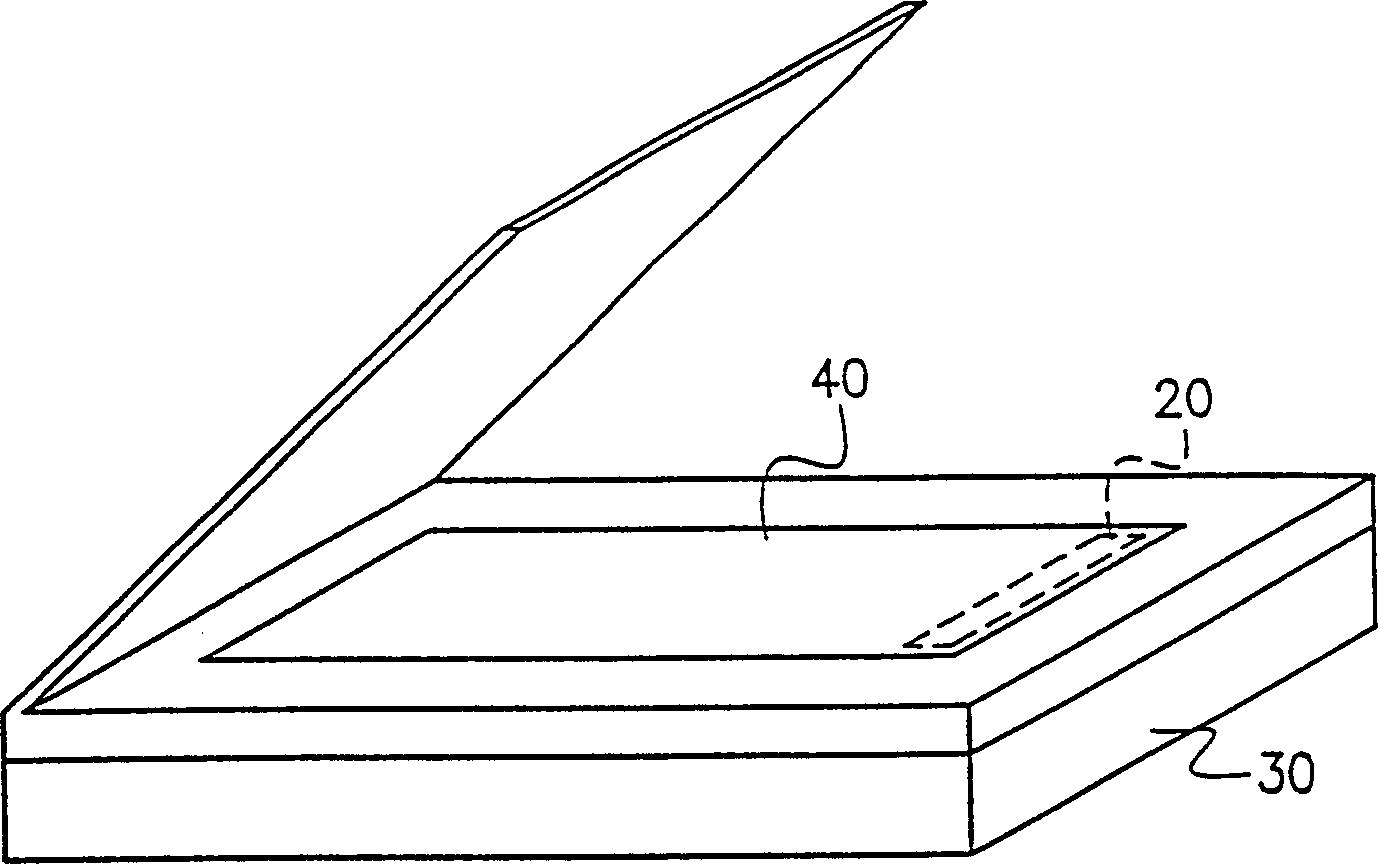Apparatus and method for automatically fetching static picture
A static image, automatic technology, applied in the direction of image communication, electrical components, etc., to achieve the effect of simplifying the operation process and shortening the processing time
- Summary
- Abstract
- Description
- Claims
- Application Information
AI Technical Summary
Problems solved by technology
Method used
Image
Examples
Embodiment Construction
[0032] Please also refer to image 3 and Figure 4 , the device is a flatbed scanner, and all such flatbed scanners have a scanning platform 40 for placing static images of scanned documents.
[0033] The device for automatically capturing still images includes: a scanning head 20 and a judging device 36 .
[0034] Wherein, the scanning head 20 is placed directly below the scanning platform 40, as a picture of continuously detecting static images back and forth, that is to say, the scanning head 20 will be directly driven by the driving component (not shown) to the The scanning platform 40 is directly below the beginning, so that after we open the scanner top cover, the scanning head 20 can be seen from the scanning platform 40 directly above.
[0035] The judging device 36 is used to judge the difference between the image information detected by the scanning head 20 in the previous period and the image information detected by the scanning head 20 in the subsequent period. ...
PUM
 Login to View More
Login to View More Abstract
Description
Claims
Application Information
 Login to View More
Login to View More - R&D
- Intellectual Property
- Life Sciences
- Materials
- Tech Scout
- Unparalleled Data Quality
- Higher Quality Content
- 60% Fewer Hallucinations
Browse by: Latest US Patents, China's latest patents, Technical Efficacy Thesaurus, Application Domain, Technology Topic, Popular Technical Reports.
© 2025 PatSnap. All rights reserved.Legal|Privacy policy|Modern Slavery Act Transparency Statement|Sitemap|About US| Contact US: help@patsnap.com



